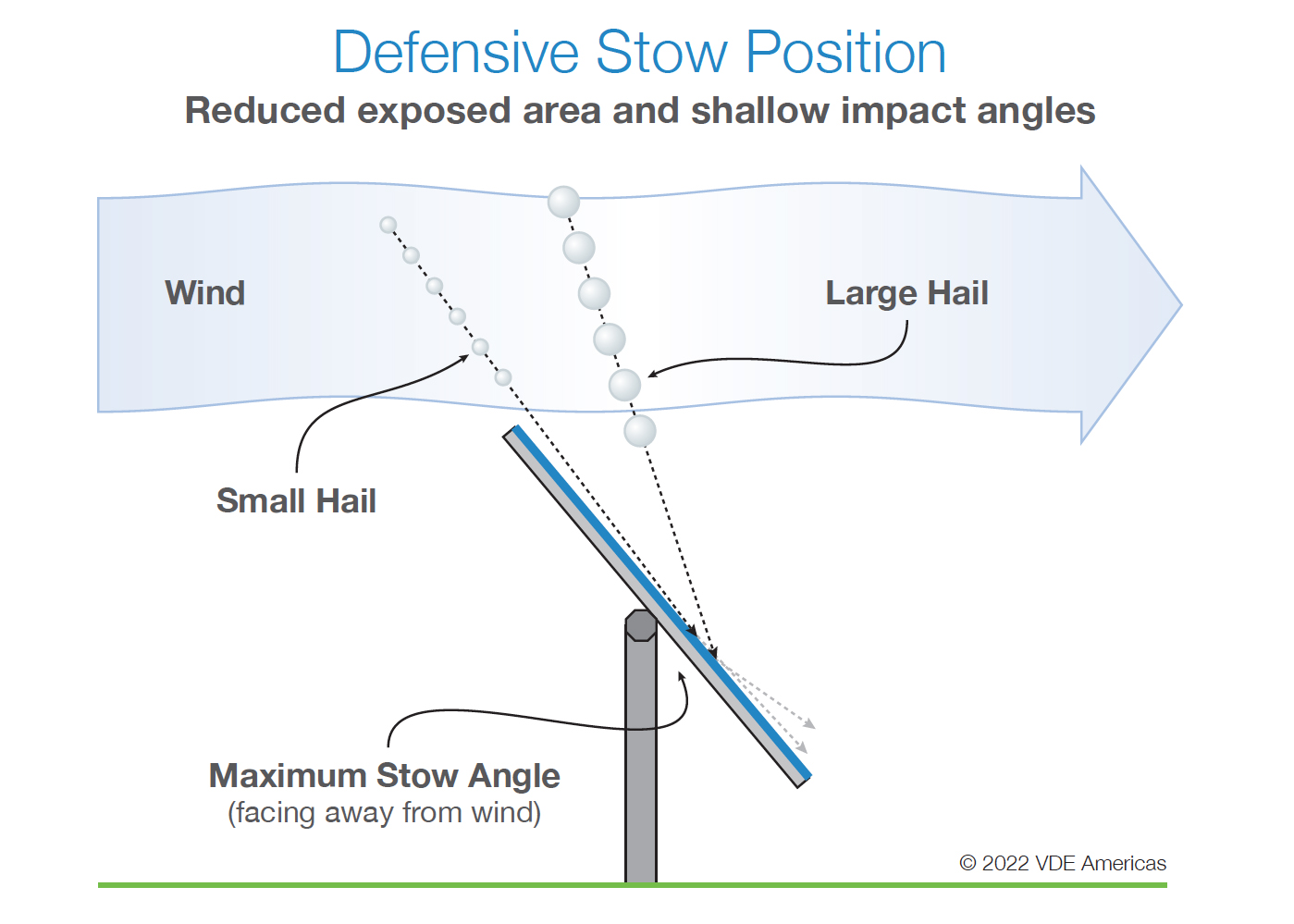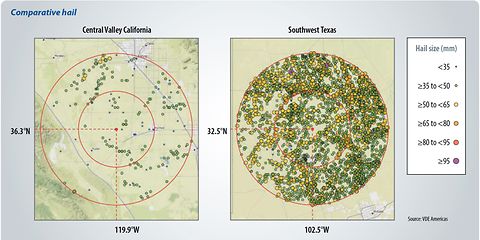Solar project stakeholders can limit catastrophic loss events with better technical literacy, due diligence, and risk mitigation practices.
Hail forms via accretion. Convective storm updrafts carry water droplets into extremely cold areas of the atmosphere, where they freeze and grow. According to NOAA, severe hail has a diameter greater than 19 millimeters (0.75 inches). In June 2010, the largest hailstone ever recovered in the United States fell in Vivian, South Dakota.
Hailstorms have resulted in record solar project losses. In May 2019, a severe hailstorm in West Texas damaged more than 400,000 modules at the Midway Solar farm, resulting in losses on the order of 70 million dollars. More recently, Business Insurance magazine reported that “U.S. renewable energy insurers are expected to pay out more than $300 million in claims” resulting from the 2022 hail season in Texas.
Hail risk is increasing due to a perfect storm of market and technology changes. On the technology front, PV modules are becoming less hail-resistant over time as manufacturers push the value-engineering envelope with larger format products and thinner front glass. Meanwhile, project development in the United States is increasing in hail-prone regions. Texas, for example, is poised to overtake California as the largest U.S. solar market.
Though large-diameter hail risk is inevitable in some locations, large project losses are not. Hail risk is not an insurmountable barrier to development and investment activities. Project stakeholders can limit catastrophic loss events with better technical literacy, due diligence, and risk mitigation practices.
Hail-resilient deployments require differentiated products and design approaches. Strategic design adaptations ensure that fielded projects can withstand site-specific risks while optimizing investor returns. Project stakeholders seeking to minimize hail risk should pay special attention to module construction, tracker characteristics, and remote operations center capabilities.
PV module qualification tests do not characterize hail-impact resistance. Core PV module safety and performance standards are pass/fail in nature and do not differentiate product designs based on long-term in-field durability. According to IEC 61215, product designs must withstand 11 impacts of a 25-millimeter (1-inch) iceball traveling at terminal velocity, which results in an impact force of 1.99 joules. These modest kinetic energies are inadequate to characterize resilience to severe hail.
PV module selection considerably impacts solar power plant hail resilience or vulnerability. Beyond-qualification Hail Durability Test (HDT) data published by RETC demonstrates that module ballistic-impact resistance is a function of front glass thickness and heat strengthening. Specifically, modules with 3.2 mm heat-tempered front glass are significantly more hail resilient than modules with 2.0 mm heat-strengthened glass. Module packaging and cell technology influence resilience to power degradation due to cell cracking. Module size, frame, and mounting details also impact probable hail losses.




